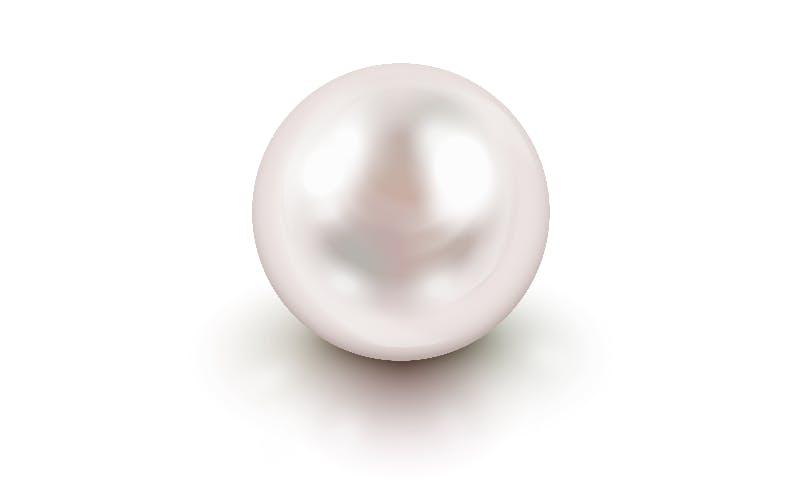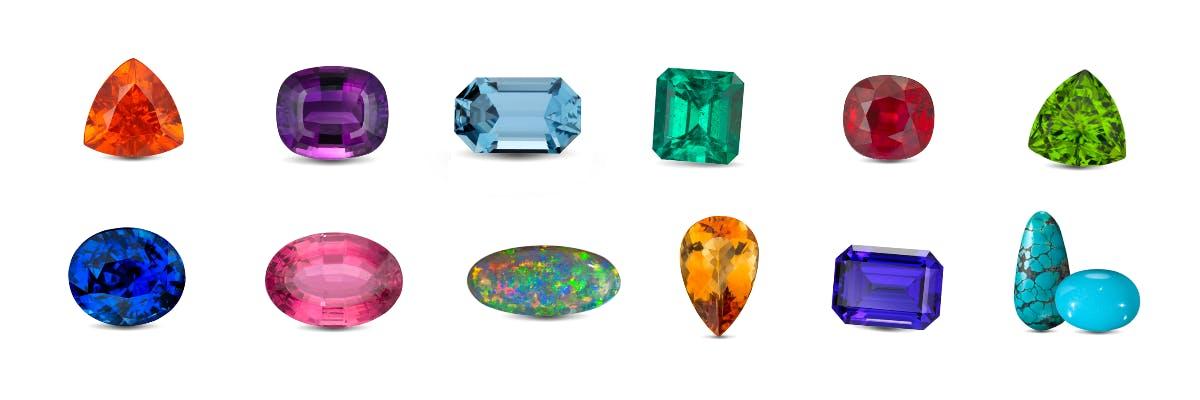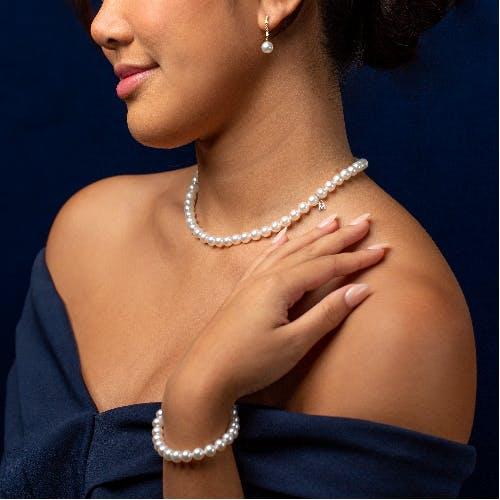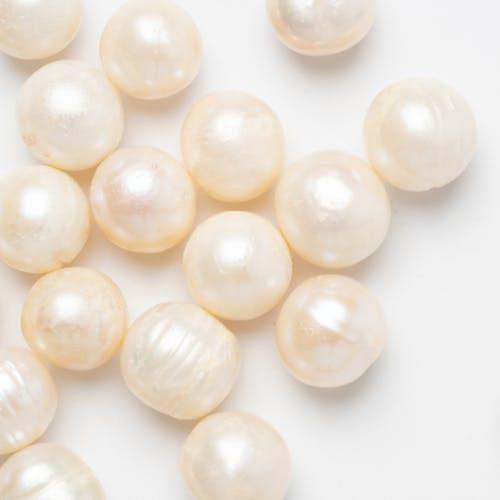Learn about Pearls


Perhaps the best-loved gems of all time, pearls—natural and cultured—occur in a wide variety of colors. The most familiar are white and cream, but the palette of colors extends to every hue. Natural pearls form around a microscopic irritant in the bodies of certain mollusks. Cultured pearls are the result of the deliberate insertion of a bead or piece of tissue that the mollusk coats with nacre.
Pearl Birthstones & Anniversaries
Pearl is the birthstone for June and the gem of the third and thirtieth anniversaries.
Overview of Pearls
Pearls are the only gemstones made by living creatures. Mollusks produce pearls by depositing layers of calcium carbonate around microscopic irritants—usually a grain of sand, as it’s commonly believed—that get lodged in their shells.
While any shelled mollusk can technically make a pearl, only two groups of bivalve mollusks (or clams) use mother-of-pearl to create the iridescent “nacreous” pearls that are valued in jewelry. These rare gemstones don’t require any polishing to reveal their natural luster.
Appropriately, the name “pearl” comes from the Old French perle, from the Latin perna meaning “leg,” referencing the leg-of-mutton shape of an open mollusk shell. Because perfectly round, smooth, natural pearls are so uncommon, the word “pearl” can refer to anything rare and valuable.
The rarest and most expensive pearls are natural pearls made in the wild without human interference. The majority of pearls sold today are cultured or farmed by implanting a grafted piece of shell (and sometimes a round bead) into pearl oysters or freshwater pearl mussels.
Pearls are very soft, ranging between 2.5 and 4.5 on the Mohs scale. They are sensitive to extreme heat and acidity. In fact, calcium carbonate is so susceptible to acid that authentic pearls will dissolve in vinegar.
The finest pearls have a naturally reflective luster, making them appear creamy white with an iridescent sheen that casts many colorful hues. Cultured freshwater pearls can also be dyed yellow, green, blue, brown, pink, purple or black.
Black pearls—which are mostly cultured because they are so rare in nature—aren’t actually black but rather green, purple, blue or silver.
Pearls used to be found in many parts of the world, but natural pearling is now confined to the Persian Gulf waters near Bahrain. Australia owns one of the world’s last remaining pearl diving fleets and still harvests natural pearls from the Indian Ocean.
Today, most freshwater cultured pearls come from China. South Sea pearls are cultured along the northwestern coastline of Australia, the Philippines, and Indonesia.
History of Pearls
Pearls have been used as adornment for centuries, at least as far back as ancient Greece, where they believed pearls were the tears of the gods. The oldest known pearl jewelry was discovered in the sarcophagus of a Persian princess who died in 520 BC.
Because natural pearls were so rare throughout history, only the richest nobles could afford them. During the Byzantine Empire, rules dictated that only the emperor was allowed to wear these treasured gemstones. Ancient Egyptians were often buried with their prized pearls.
Tudor England was known as the Pearl Age because of the stone’s popularity with the upper class during the sixteenth century. Portraits showed royals wearing pearl jewelry and clothing adorned with pearls.
Pearls became more accessible in the early 1900s when the first commercial culturing of saltwater pearls began in Asia. Since the 1920s, cultured pearls have almost completely replaced natural pearls in the market, making this classic gemstone affordable for nearly any budget.
Frequently asked questions about Pearls
Gemstone Guide
Learn more about colorful gemstones, their symbolism, which stone represents your birthstone, which stone to celebrate an Anniversary with and more ways to incorporate colorful gems in to your jewelry box.


Visit us in any Lee Michaels Fine Jewelry location to browse a more robust assortment of pearl earrings, pearl necklaces, pearl bracelets, David Yurman pearl jewelry and many more. Shop more jewelry trends at any Lee Michaels Fine Jewelry store near you. In Baton Rouge, Louisiana, a Lee Michaels Fine Jewelry store is located inside the Mall of Louisiana and there is also a Lee Michaels Fine Jewelry store located at the corner of Corporate Boulevard and Jefferson Highway near mid-city. In Lafayette, Louisiana, a Lee Michaels Fine Jewelry store is located on Ambassador Caffery. In Shreveport, Louisiana, a Lee Michaels Fine Jewelry store is located on Youree Drive at East 70th. Just outside of New Orleans, Louisiana, in Metairie, a Lee Michaels Fine Jewelry store is located on Causeway Boulevard at Lakeside Shopping Center. In San Antonio, Texas there are two Lee Michaels Fine Jewelry stores. Find one at The Shops at La Cantera and another located inside the Northstar Mall on San Pedro Avenue. In Jackson, Mississippi, visit a Lee Michaels Fine Jewelry store located at the Renaissance at Colony Park on Highland Colony Parkway. Visit the newest Lee Michaels Fine Jewelry store, located in ABQ Uptown of Albuquerque, New Mexico.

